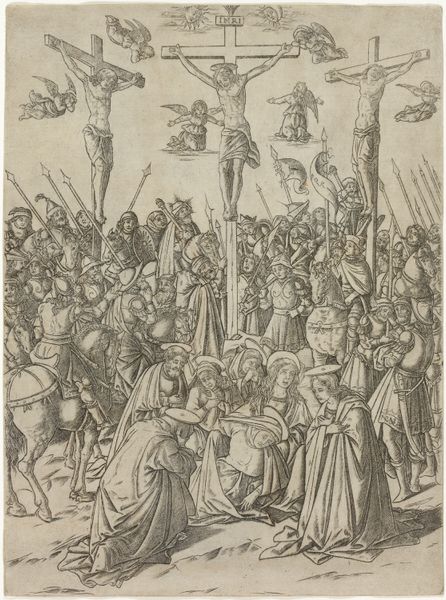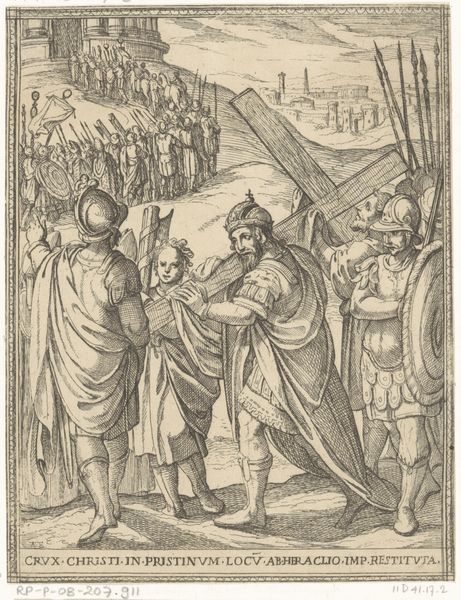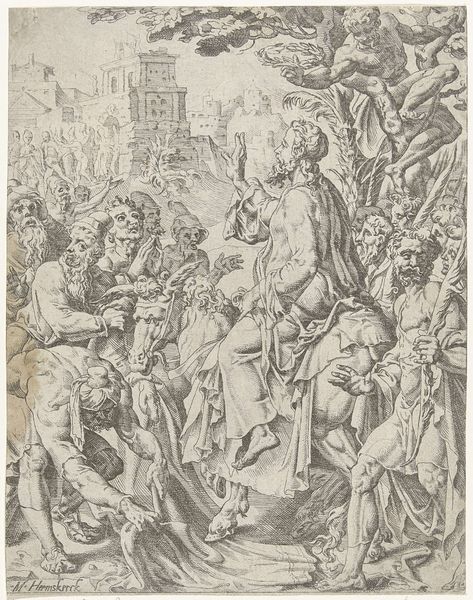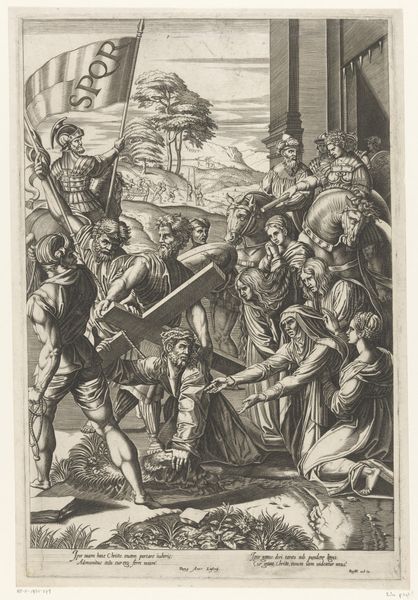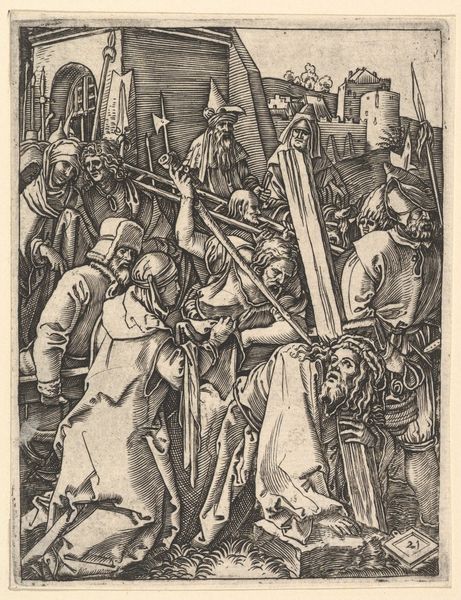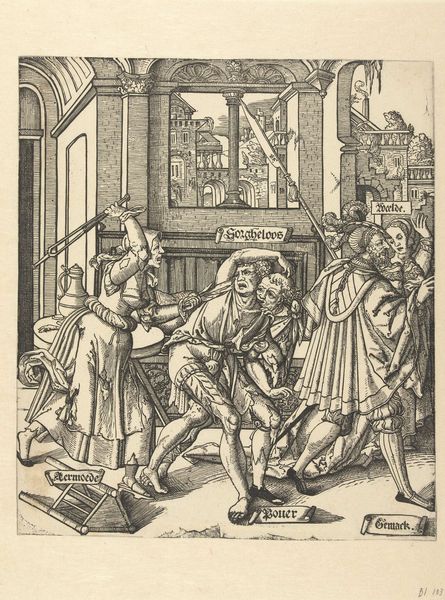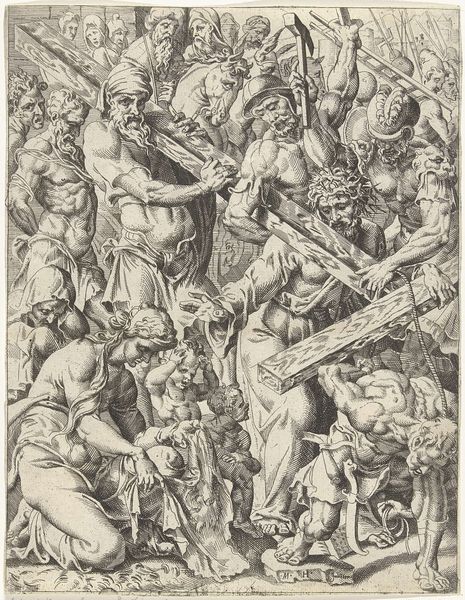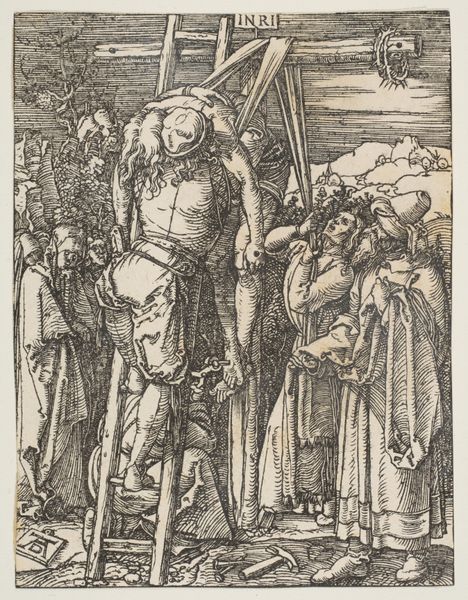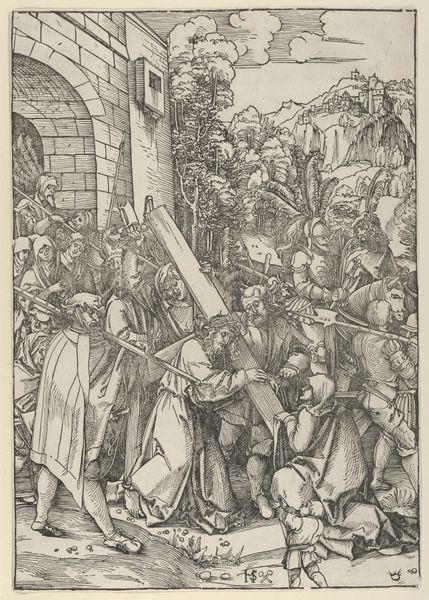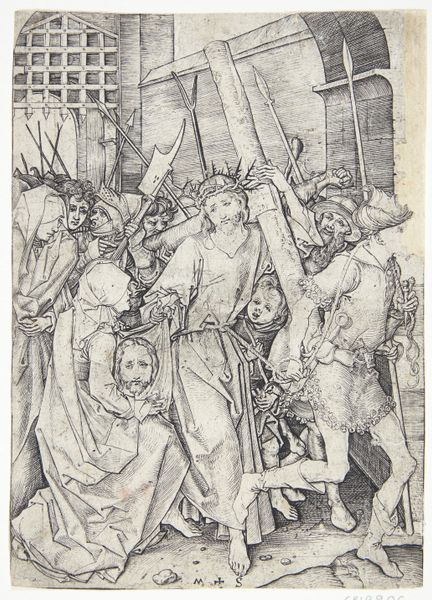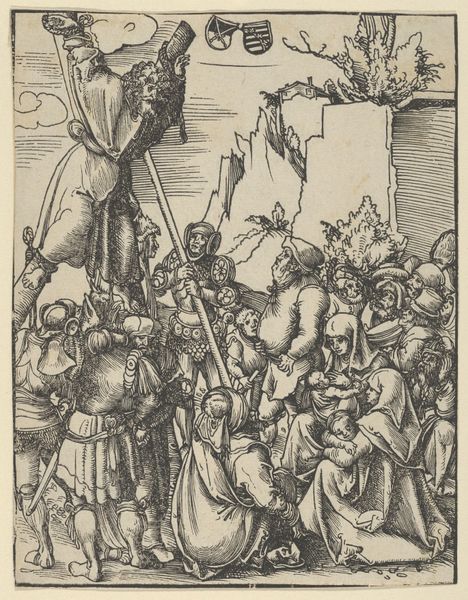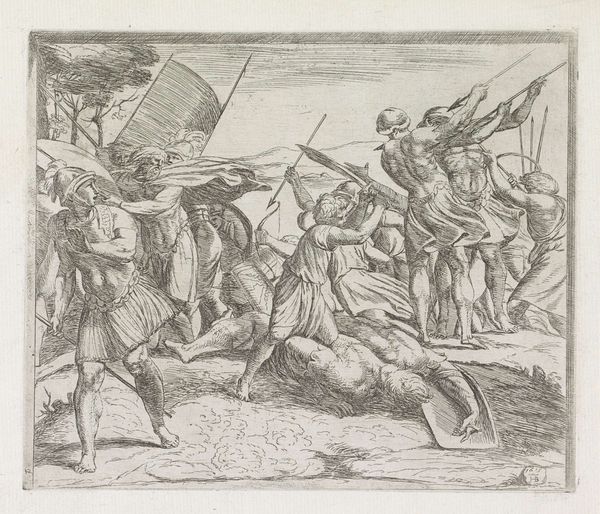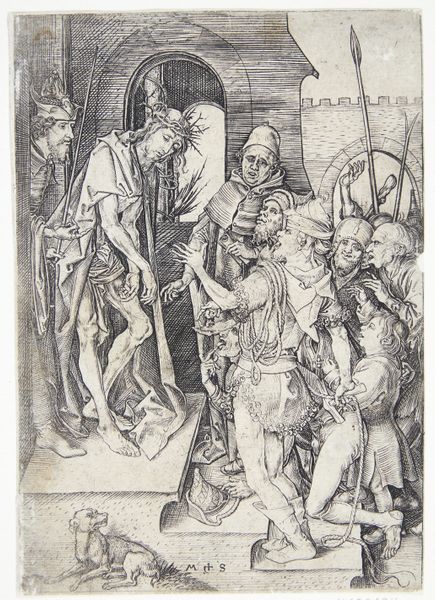
print, intaglio, engraving
#
medieval
#
narrative-art
# print
#
intaglio
#
figuration
#
history-painting
#
engraving
#
realism
Dimensions: sheet: 14.5 × 10.7 cm (5 11/16 × 4 3/16 in.)
Copyright: National Gallery of Art: CC0 1.0
Curator: Master AG’s print, “Christ Carrying the Cross," presents a harrowing depiction of a key moment in the Passion. The lines are fine yet forceful, and the composition—it feels immensely crowded, doesn't it? Editor: Yes, and claustrophobic! The close proximity of figures adds to the palpable sense of suffering, the compressed space filled with what feels like tangible emotional weight. What I find striking is how the imagery draws upon well-worn archetypes of medieval drama. Curator: Indeed, prints like this, created through intaglio methods such as engraving, served a vital role in disseminating religious imagery across Europe. The act of incising the image into the metal, the physical labor involved, directly informs how that narrative of suffering takes form, doesn't it? Consider the market for these: a rising literate, mercantile class keen for devotional imagery in their homes. Editor: Absolutely. We also see the cross, a universal symbol of sacrifice. Consider, too, the figures surrounding Christ. Are these figures readily recognizable? The Roman soldiers with their archaic armour? Even the faceless masses seem representative of all who participated, even passively, in the event. The expressions convey agony, mockery, brutality – the full range of human response to suffering. Curator: And yet, despite that universality of experience and the "realism" in depiction, one mustn't forget that printmaking had its limitations. What does that repetitive act of engraving say about the artistic vision here? The sharp contrasts of black ink on the paper surface drive that somber, moral point. And if you zoom in to the walls of the city in the distance and the various implements used to threaten the Christ-like figure we can assume they are readily recognizable within the relevant locale or even made by the artisans of that town. Editor: Interesting, these are things worth further research, surely, from cultural interpretations of punishment to those objects made within a cultural landscape. Overall, there is a profound message of endurance against injustice here, encoded within an impactful scene. Curator: Agreed, by considering its materiality, this work gives insights into religious experience and craft economies of the era. Editor: Exactly, this print functions as a potent vehicle for cultural memory.
Comments
No comments
Be the first to comment and join the conversation on the ultimate creative platform.
